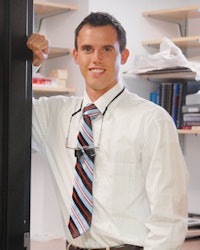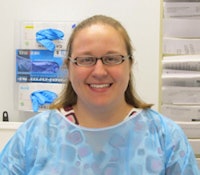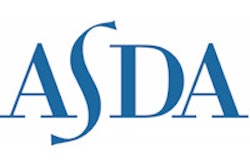
Student loan repayment programs that offer up to $170,000 are attracting dentists and hygienists to the National Health Service Corps (NHSC), but good salaries and the satisfaction of providing care for the underserved are keeping many at public health clinics long past their initial commitments.
While it is generally acknowledged that certain U.S. populations face challenges when it comes to access to care, there is less consensus on how to persuade new dental professionals to go where they're needed most: rural areas or inner-city clinics that treat Medicaid patients. New graduates leave dental and hygiene schools with such huge debt loads that they often simply cannot afford to work in public health clinics that treat underserved populations.
The average dental school student graduates with $170,000 worth of loan debt, according to the ADA.
But now, more and more dentists and hygienists are signing up for multiyear contracts with the NHSC for its tax-free loan repayment programs, which offer up to $60,000 for two years of service and up to $170,000 for a five-year service commitment. And continued service provides the opportunity to pay off all student loans.
“So many people are graduating with such big loans.”
— David VanSlambrouck, DDS,
Community Dental Clinic,
Morrisville, VT
David VanSlambrouck, DDS, received $50,000 for a two-year commitment to work in the Community Dental Clinic in Morrisville, VT. Brook Carlson, RDH, received $15,000 for working two years at the Whiteside County Dental Clinic in Rock Falls, IL.
While both were initially lured by the prospect of paying off a chunk of their school loans, both say they enjoy the work and the lack of pressure to produce or to sell procedures that is often entailed in private or corporate practices.
Health professional shortage areas
A February 2011 report by the Pew Center on the States on dental shortages found that more than 31 million Americans are underserved due to a shortage of dentists, and 4,000 areas nationwide are federally designated as health professional shortage areas (HPSAs).
Additionally, healthcare reform will provide dental coverage for an additional 5.3 million children by 2014, but most states don't have basic policies and programs in place to translate the expanded coverage into more dental care, according to dental experts.
 David VanSlambrouck, DDS, Community Dental Clinic, Morrisville, VT
David VanSlambrouck, DDS, Community Dental Clinic, Morrisville, VT
Dr. VanSlambrouck, 27, graduated last spring from the University of Michigan Schoolof Dentistry with $200,000 in school loans. He was hired by the Community Health Service of Lamoille Valley to establish the dental clinic, which opened in June 2010. He relished being able to design the building and pick out all the new equipment, especially without having to put up $500,000 of his own money to open a new dental office.
"I was interested in the loan repayment program," he acknowledged. "But even more than that, what attracted me to work in FQHCs [federally qualified health centers] was the patient population and just being able to help people that really needed dental care but lacked access to it."
Dr. VanSlambrouck was offered a "comfortable" salary and a "very competitive compensation package" to work at the clinic, located near the ski resort in Stowe, VT, but he knows he could probably make more in private practice. He is now negotiating an incentive bonus, and he gets five weeks of paid vacation.
"There are definitely a lot of incentives to go this route," he noted.
Dr. VanSlambrouck works four 10-hour days in the clinic, treating as many as 20 patients per day with the help of a hygienist, two dental assistants, and an administrative assistant.
"I'm able to live pretty comfortably because the loan repayment knocked down a quarter of my loan," he told DrBicuspid.com. "Also, by working at an FQHC, I'm able to be on salary, but I'm not under that stress of being a new associate, of having to produce, produce, produce."
While most of his fellow graduates went into private practice, more and more students are considering working for the NHSC, he added. "I think there's more of a trend for it, and it's picking up steam, and the big reason is that so many people are graduating with such big loans," he said.
There are more than 10,000 NHSC clinics nationwide, of which 40% are FQHCs in designated healthcare shortage areas. Currently, the NHSC program has 882 dentists and 155 hygienists who have received either scholarships or loan repayments. And the program now has more than 500 vacancies for dentists and hygienists.
"Definitely, more people are becoming aware of the program," NHSC Director Rebecca Spitzgo told DrBicuspid.com. "We got federal funding [through the Health Care Reform Act] in 2009 for three years that substantially increased funding and allowed us to provide more loan repayments. There is more funding now than ever before."
This year the NHSC received more than 5,500 applications and will be able to fund 4,500 jobs, she added.
Challenging job market
Carlson, 28, jumped at the chance to apply for the program. "Heck, yeah," she replied when the Community Health Clinic director told her about it. Two dentists and a nurse practitioner who work at the clinic also have signed up for the NHSC program. The clinic has eight dentists and is the only one in the area that accepts Medicaid patients. About 65% to 75% of the patients are on Medicaid, while about 15% have insurance or self-pay. Carlson treats about eight patients per day.
 Brook Carlson, RDH, Whiteside County Dental Clinic, Rock Falls, IL
Brook Carlson, RDH, Whiteside County Dental Clinic, Rock Falls, IL
"We're busy all day," Carlson said.
About half of Dr. VanSlambrouck's patients are on Medicaid, 30% are on a sliding pay scale, and 20% have private insurance. He is trying to change the perception that public health clinics don't provide the same level of care as private practitioners.
"That's the kind of mentality we're trying to break," Dr. VanSlambrouck said. "We want people to realize we're delivering high-quality care. I have a lot of patients that can't afford private dentists because the cost of care has gone up so much."
While dentists in some parts of the country see FQHCs as unfair government-subsidized competitors, Dr. VanSlambrouck said the private dentists in his area were glad to see the clinic open. "I think there's so much dental need here we were actually welcomed," he said. "A lot of dentists are excited we're here to address the need. I've never heard so many people excited about dentists before."
Carlson plans to stay on at the clinic after her contract ends, in part because hygienist jobs are scarce. "There are hardly any jobs nowadays. The Quad-city area is flooded with hygienists, and it took awhile to find full-time jobs," she told DrBicuspid.com. "Many have no benefits. Times are tough." She said many of her classmates had a hard time even finding part-time jobs.
In fact, despite the Bureau of Labor Statistics' projections for a 36% growth in hygienist jobs in the U.S., Caryn Solie, RDH, president of the American Dental Hygienists' Association, noted in the organization's March newsletter that the current job shortage is the No. 1 concern she hears about from hygienists. Growing efforts to allow midlevel health providers will be good for hygienists and will also alleviate the access-to-care issue, she wrote.
Gratifying work
In addition to a stable job, Carlson said she plans to stay on after her contract expires because the work is so gratifying.
"At first it was just a job, but after getting to know the clientele, I feel like I'm helping people more than in private practice," Carlson said. "And you don't have to sell things like in private practice, like cosmetic procedures and whitening."
Persuading dentists and hygienists to remain in the clinics is one of the program's main goals, Spitzgo said. "Part of the mission is to recruit and retain people," she noted. "Many people who go to underserved areas have a passion for this work, and when they get there, they really find the work very rewarding, and they put down roots and end up staying. We want to make these sites a place people will want to work and stay."
Of those now in the program, more than 85% say they plan to stay where they are, Spitzgo added, and some 76% have remained in their jobs after completing their contracts.
Dental professionals may initially go into the program to pay off their school loans, but in doing so, they are also responding to a desperate need for access to oral care.
"We're all in this together," Dr. VanSlambrouck noted, "to help people achieve dental care."



















